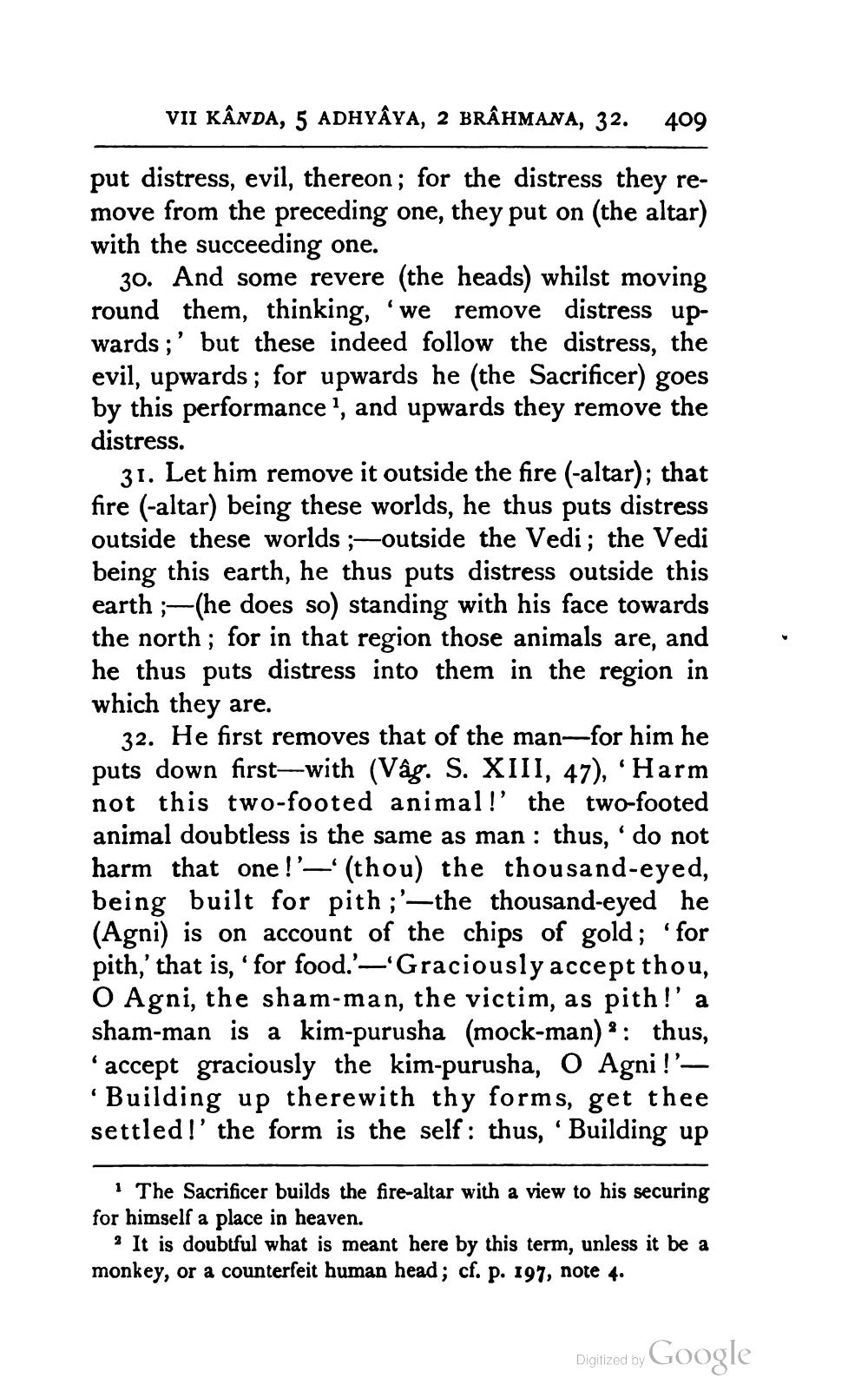________________
VII KANDA, 5 ADHYAYA, 2 BRAHMANA, 32. 409
put distress, evil, thereon; for the distress they remove from the preceding one, they put on (the altar) with the succeeding one.
30. And some revere (the heads) whilst moving round them, thinking, 'we remove distress upwards; but these indeed follow the distress, the evil, upwards; for upwards he (the Sacrificer) goes by this performance 1, and upwards they remove the distress.
31. Let him remove it outside the fire (-altar); that fire (-altar) being these worlds, he thus puts distress outside these worlds;-outside the Vedi; the Vedi being this earth, he thus puts distress outside this earth;-(he does so) standing with his face towards the north; for in that region those animals are, and he thus puts distress into them in the region in which they are.
32. He first removes that of the man-for him he puts down first-with (Vâg. S. XIII, 47), 'Harm not this two-footed animal!' the two-footed animal doubtless is the same as man: thus, ' do not harm that one!'-(thou) the thousand-eyed, being built for pith;'-the thousand-eyed he (Agni) is on account of the chips of gold; 'for pith,' that is, 'for food.'-'Graciously accept thou, O Agni, the sham-man, the victim, as pith!' a sham-man is a kim-purusha (mock-man): thus, ' accept graciously the kim-purusha, O Agni !''Building up therewith thy forms, get thee settled!' the form is the self: thus, 'Building up
1 The Sacrificer builds the fire-altar with a view to his securing for himself a place in heaven.
2 It is doubtful what is meant here by this term, unless it be a monkey, or a counterfeit human head; cf. p. 197, note 4.
Digitized by
Google




